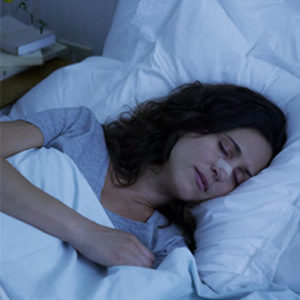Ever had your child wake up feeling hot as a furnace? A high fever can be scary, but it’s often just the body’s way of fighting off an infection. Let me break it down for you with some examples.
What Exactly Is a Fever?
A fever is when your child’s temperature rises above that normal 98.6°F mark, usually due to battling a bacterial or viral infection. It could be anything from a sore throat to the icky chickenpox virus making them miserable. Once that thermometer hits 102°F or higher, you’ll want to watch out – high fevers raise the risk of seizures in little ones.
Early Warning Signs
In the beginning stages, your child might seem a bit off. They’ll likely have the chills, with goosebumps and shivers like they’re freezing (even though that temp is up). The teeth may start chattering too. Adorable, but not a good sign!
As It Progresses
As that fever digs in, the symptoms tend to shift. Now your little one may have flushed, sweaty skin and complain of a pounding headache. General aches, pains, and feeling crummy are also common fever buddies. No fun at all.
What to Do When It Strikes
Alright, so your kid’s running that dreaded high fever. Here’s a quick action plan:
1) Make them comfortable in a cool, breezy room with light covers. No need for an ice bath!
2) Keep offering fluids to stay hydrated from all that sweating.
3) Children’s acetaminophen or ibuprofen can provide relief too. (But never give aspirin to little kids.)
4) Monitor how they’re responding and don’t hesitate to see a doctor if that fever spikes or you have other worries.
The main thing? Don’t panic. Fevers are a sign their body is kicking into high gear against those rascally germs. With some rest and TLC, that temperature should start dropping before you know it. But always reach out to your paediatrician if you need reassurance – that’s what they’re there for!
The Itchy Misery of Chickenpox
Ah, the chickenpox – a classic illness of childhood that’s brought misery to millions over the years! If your child comes down with this viral infection, you’ll likely notice some telltale signs like:
- An itchy, red rash that starts with small spots but progresses to fluid-filled blisters all over the body
- A fever over 100.4°F (38°C)
- General aches, pains and fatigue
- Loss of appetite
Chickenpox is highly contagious through airborne particles from sneezes or coughs as well as contact with the fluid in the blisters. So if one child gets it, it often sweeps rapidly through families, daycares and schools.
While chickenpox isn’t usually dangerous in healthy kids, the intense itching from the rash can be pure torture for the little ones. To help ease their discomfort:
- Give lukewarm baths with baking soda or oatmeal to soothe itchiness
- Apply over-the-counter anti-itch creams or take oral antihistamines
- Trim their nails short and put socks over their hands at night to avoid scratching
- Offer popsicles, cold drinks and soft foods if their throat is sore
- Give them acetaminophen for fever or pain relief
Chickenpox runs its course in about a week to 10 days. Just keep your child home and resting until all the blisters have scabbed over. Most kids bounce back quickly, though be watchful for any signs of complications like dehydration or skin infections.
With a new chickenpox vaccine available, this itchy misery may become a rarity in coming generations. But for now, it’s one of those childhood rites of passage many kids (and parents) endure!
The Bright Rash of Scarlet Fever
While not as common these days, scarlet fever still occasionally rears its bright red, rashy head in young kids. This bacterial illness is easily treated with antibiotics now, but it used to be a major killer in centuries past.
Scarlet fever typically starts with the typical symptoms of strep throat:
- A severely sore, red throat
- High fever over 101°F (38.3°C)
- Headache
- Nausea/vomiting
- Swollen neck glands
Then within a day or two, the signature rash appears – a red, sandpapery rash that starts on the chest and abdomen before spreading all over. The cheeks may also become bright red in appearance, resembling, well, a slap to the face!
If your child develops these symptoms, call the doctor right away. With prompt antibiotic treatment, recovery is pretty quick within a few days. Just be sure they take all the medicine as prescribed to knock out any lingering strep bacteria.
You can help ease their discomfort with fever reducers, soft foods, plenty of rest and fluids. Cool mist humidifiers can also help a sore throat. Keep them home until they’ve been on antibiotics for 24 hours and the fever is gone.
While scarlet fever definitely sounds scary, try not to panic if your kiddo comes down with it. Modern antibiotics have made this illness easily treatable. Just follow your doctor’s advice and keep your little one comfortable. They’ll likely be back to their energetic selves in no time!
The Slapped Cheek Look
One day your child seems perfectly fine, the next their cheeks are a brilliant shade of crimson! If this alarming situation occurs, they may have caught the viral illness known as “fifth disease” or slapped cheek syndrome.
After a day or two of mild cold-like symptoms like a low fever and runny nose, the telltale “slapped” rash appears on both cheeks. This is followed by a light, lacy pink rash spreading over the arms, legs and body. Sounds unpleasant, but fifth disease is actually a pretty mild childhood illness.
Most kids bounce back quickly with just some rest, fluids and fever relievers as needed. There’s no specific treatment since the illness is viral. Just avoid ibuprofen as it can worsen the rash.
The bright red rash looks much worse than it is! After an initial week or so, it can come and go for up to a month before finally fading away. As long as your child is feeling well otherwise, they can return to school or daycare to spread the slapped cheek merriment to their little friends.
Of course, let the staff know about their illness so they can watch for other kids developing symptoms. Fifth disease is quite contagious through respiratory droplets until the rash appears. But after that point, the viruses have moved on out of the respiratory tract so it’s safe to go around others.
As for you, try not to be too alarmed by their rosy glow – just snap a picture to commemorate this brief, viral rite of childhood passage! As long as your child is comfortable and fever-free, that red slapped cheek is usually nothing to worry about.
With some basic knowledge of common childhood fevers and rashes, you can keep your cool when your little one’s temperature rises. Most illnesses run their course without issue when properly managed. But never hesitate to consult your pediatrician if symptoms seem severe or you have any concerns. A parent’s TLC, watchful eye, and good judgement are still the best medicine!
Photo “Fever” by Anthony Cunningham for Zoom Health
Zoom Health is a leading UK supplier of Home Health Tests and Earplugs





